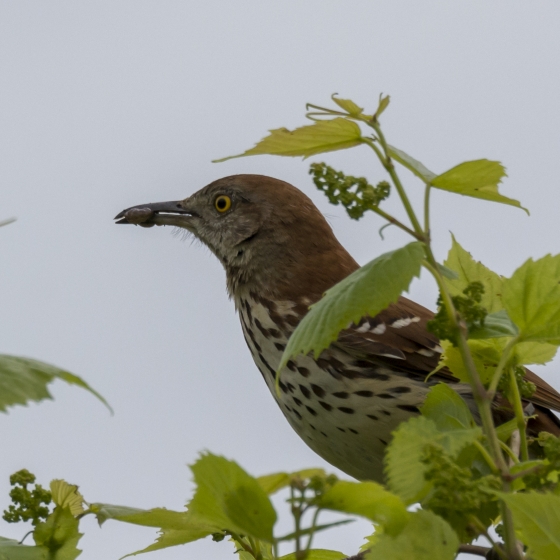Brown Thrasher

Introduction
This common bird of North American woodlands has only been recorded once in Britain, in November 1966, when a stray individual unexpectedly turned up in Dorset and remained through to the following February.
Brown Thrasher populations tend to be resident or short-distance migrants, underlining the exceptional nature of the 1966/67 record.

Key Stats
Status and Trends
Conservation Status
Population Size
Population Change
Population trends of this scarce species are not routinely monitored.
Distribution
This vagrant has not been recorded in the UK for many decades and as such cannot be mapped.
Distribution Change
This vagrant is too rarely reported to map distribution change.
Seasonality
This species has been too rarely reported to BirdTrack during 2011–22 to properly assess seasonality.
Movement
Britain & Ireland movement
Biology
Survival and Longevity
Survival is shown as the proportion of birds surviving from one year to the next and is derived from bird ringing data. It can also be used to estimate how long birds typically live.
Classification, names and codes
Classification and Codes
- Order: Passeriformes
- Family: Mimidae
- Scientific name: Toxostoma rufum
- Authority: Linnaeus, 1758
- BTO 5-letter code: BROTH
- Euring code number: 10690
Alternate species names
- Catalan: mim becut rogenc
- Czech: drozdec hnedý
- Danish: Røddrossel
- Dutch: Rosse Spotlijster
- Estonian: ruske-pilalind
- Finnish: ruostesirppimatkija
- French: Moqueur roux
- German: Rotspottdrossel
- Hungarian: vörhenyes gezerigó
- Icelandic: Móskuþrasi
- Italian: Mimo rossiccio
- Latvian: bruna žagaste
- Lithuanian: rudoji pašaipa
- Norwegian: Brunspottefugl
- Polish: przedrzezniacz rudy
- Portuguese: debulhador
- Slovak: drozdec cervenkavý
- Slovenian: rjavi oponašalec
- Spanish: Cuitlacoche rojizo
- Swedish: rödbrun härmtrast

